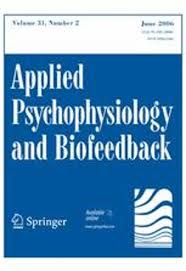Exploring a 1-Minute Paced Deep-Breathing Measurement of Heart Rate Variability as Part of a Workers' Health Assessment
Categories
Keywords
Categories
Keywords
- Show all
- ADHD
- Anxiety/Panic
- Burnout
- Cancer
- Cardiovascular disease
- Chronic pain
- Cognitive function
- Cortisol/DHEA
- Costs
- Dementia
- Depressie
- Diabetes
- Global Coherence
- Hypertension
- Intuition & Consiousness
- Kids/Youth
- Leadership
- Meditation/Mindfulness
- Metabolic Syndrome
- Obesity/Eating disorder
- Pregnancy
- PTSD
- Resilience
- Schizophrenia
- Science HRV & Coherence
- Sleep quality & fatigue
- Social Coherence
- Stress
Exploring a 1-Minute Paced Deep-Breathing Measurement of Heart Rate Variability as Part of a Workers' Health Assessment

Low heart rate variability (HRV) is related to health problems that are known reasons for sick-leave or early retirement. A 1-minute-protocol could allow large scale HRV measurement for screening of health problems and, potentially, sustained employability. Our objectives were to explore the association of HRV with measures of health. Cross-sectional design with 877 Dutch employees assessed during a Workers’ Health Assessment. Personal and job characteristics, workability, psychological and mental problems, and lifestyle were measured with questionnaires. Biometry was measured (BMI, waist circumference, blood pressure, glucose, cholesterol). HRV was assessed with a 1-minute paced deep-breathing protocol and expressed as mean heart rate range (MHRR). A low MHRR indicates a higher health risk. Groups were classified age adjusted for HRV and compared. Spearman correlations between raw MHRR and the other measures were calculated. Significant univariable correlations (p < 0.05) were entered in a linear regression model to explore the multivariable association with MHRR. Age, years of employment, BMI and waist circumference differed significantly between HRV groups. Significant correlations were found between MHRR and age, workability, BMI, waist circumference, cholesterol, systolic and diastolic blood-pressure and reported physical activity and alcohol consumption. In the multivariable analyses 21.1% of variance was explained: a low HRV correlates with aging, higher BMI and higher levels of reported physically activity. HRV was significantly associated with age, measures of obesity (BMI, waist circumference), and with reported physical activity, which provides a first glance of the utility of a 1-minute paced deep-breathing HRV protocol as part of a comprehensive preventive Workers’ Health Assessment.
Download the complete article, click here